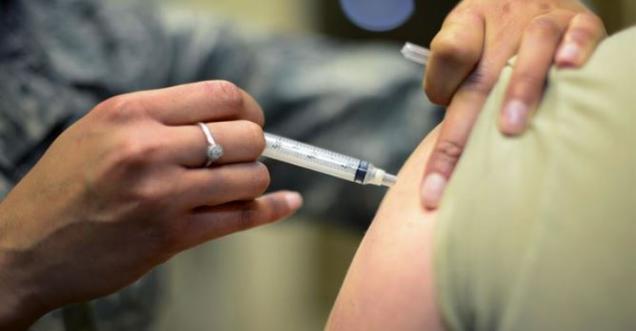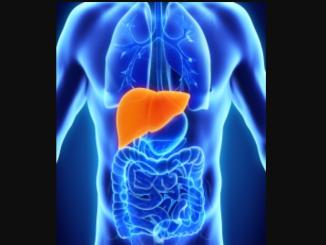
News Claim: A new viral in healthnutnews claiming that flu vaccine contain upwards of 51 parts per million of mercury, or 25,000 times the legal maximum for drinking water. We don't find it to be true.
In case you missed it, recent lab tests conducted at the Natural News Forensic Food Lab found that seasonal flu vaccines, which are pushed on virtually everyone these days, including young babies, pregnant women and the elderly, contain outrageously high levels of neurotoxic mercury. Vials of batch flu vaccine produced by British pharmaceutical giant GlaxoSmithKline (GSK) were found to contain upwards of 51 parts per million of mercury or 25,000 times the legal maximum for drinking water established by the Environmental Protection Agency (EPA).
“Thimerosal, a mercury derivative, is added as a preservative. Each 0.5-mL dose contains 50 mcg [micrograms] thimerosal ([less than] 25 mcg mercury). Each 0.5-mL dose may also contain residual amounts of ovalbumin ([less than or equal to] 0.3 mcg), formaldehyde ([less than or equal to] 25 mcg), and sodium deoxycholate ([less than] 50 mcg) from the manufacturing process.”
And yet, even with all these added contaminants, pregnant women, the elderly and young children are prodded to get jabbed every year by health authorities. Never mind that each of these ingredients is a known neurotoxin, not to mention the fact that formaldehyde is a known cause of cancer — just line right up and get your flu shots, because the government says they’re good for you!
The irony in all this is that the government now admits that mercury is toxic, at least when it comes from other sources. The Obama administration, as we recently reported, is on a crusade to shut down all coal power plants, using the excuse that they blast heavy amounts of mercury into the atmosphere. And official government warnings tell pregnant women to avoid mercury from canned tuna.
News published in: Flu vaccine contains 25,000 times more mercury than is legally allowed in drinking water
Facts Check: False
Google Advertisement:Facts Check Analysis: The article refers to the use of Thimerosal as a preservative used in the flu vaccine.
As per the FDA,
- All vaccines routinely recommended for children 6 years of age and younger in the U.S. are available in formulations that do not contain thimerosal.
- The use of thimerosal as a preservative in vaccines has markedly declined due to the reformulation and development of new vaccines in single-use presentations.
Thimerosal as a Preservative
Thimerosal is a mercury-containing organic compound (an organomercurial). Since the 1930s, it has been widely used as a preservative in a number of biological and drug products, including many vaccines, to help prevent potentially life threatening contamination with harmful microbes. The documented antimicrobial properties of thimerosal contribute to the safe use of vaccines in multi-dose vials, and the ability to package certain vaccines, such as those for seasonal and pandemic influenza, in multi-dose vials helps facilitate immunization campaigns in the United States and globally that save lives. However, the use of thimerosal as a preservative in U.S. FDA-licensed vaccines has significantly declined due to reformulation and development of new vaccines presented in single-dose containers.
Thimerosal, which is approximately 50% mercury by weight, has been one of the most widely used preservatives in vaccines. It is metabolized or degraded to ethylmercury and thiosalicylate. Ethylmercury is an organomercurial that should be distinguished from methylmercury, a related substance that has been the focus of considerable study. Methylmercury is the type of mercury found in certain kinds of fish. At high exposure levels methylmercury can be toxic to people. In the United States, federal guidelines keep as much methylmercury as possible out of the environment and food, but over a lifetime, everyone is exposed to some methylmercury.
At concentrations found in vaccines, thimerosal meets the requirements for a preservative as set forth by the United States Pharmacopeia; that is, it kills the specified challenge organisms and is able to prevent the growth of the challenge fungi (U.S. Pharmacopeia 2004). Thimerosal in concentrations of 0.001% (1 part in 100,000) to 0.01% (1 part in 10,000) has been shown to be effective in clearing a broad spectrum of pathogens. A vaccine containing 0.01% thimerosal as a preservative contains 50 micrograms of thimerosal per 0.5 mL dose or approximately 25 micrograms of mercury per 0.5 mL dose. For comparison, this is roughly the same amount of elemental mercury contained in a 3 ounce can of tuna fish.
Prior to introduction of thimerosal in the 1930's, data were available in several animal species and humans providing evidence for its safety and effectiveness as a preservative (Powell and Jamieson 1931). Since then, thimerosal has been the subject of numerous studies (see Bibliography- Notable Studies and Assessments Supporting the Safe Use of Thimerosal in Vaccines) and has a long record of safe and effective use preventing bacterial and fungal contamination of vaccines, with no ill effects established other than minor local reactions at the site of injection.
While the use of mercury-containing preservatives has declined in recent years due to the development of new products formulated into single-dose presentations that do not require preservatives, thimerosal has been used in some immune globulin preparations, anti-venins, skin test antigens, and ophthalmic and nasal products, in addition to some vaccines. Under the FDA Modernization Act of 1997, the FDA compiled a list of regulated products containing mercury, including those with thimerosal (Federal Register 1999). It is important to note that this list was compiled in 1999; some products listed are no longer manufactured and many products have been reformulated without thimerosal.
FDA Actions Pertaining to Thimerosal in Vaccines
FDA has actively addressed the issue of thimerosal as a preservative in vaccines. The use of thimerosal as a preservative in U.S. FDA-licensed vaccines has significantly declined due to reformulation and development of new vaccines presented in single-dose containers. Under the FDA Modernization Act (FDAMA) of 1997, the FDA conducted a comprehensive review of the use of thimerosal in childhood vaccines. Conducted in 1999, this review found no evidence of harm from the use of thimerosal as a vaccine preservative, other than local hypersensitivity reactions (Ball et al. 2001).
As part of the FDAMA review, the FDA evaluated the amount of mercury an infant might receive in the form of ethylmercury from vaccines under the U.S. recommended childhood immunization schedule and compared these levels with existing guidelines for exposure to methylmercury, as there are no existing guidelines for ethylmercury, the metabolite of thimerosal. At the time of this review in 1999, the maximum cumulative exposure to mercury from vaccines in the recommended childhood immunization schedule was within acceptable limits for the methylmercury exposure guidelines set by FDA, the Agency for Toxic Substances and Disease Registry, and the World Health Organization. However, depending on the vaccine formulations used and the weight of the infant, some infants could have been exposed to cumulative levels of mercury during the first six months of life that exceeded Environmental Protection Agency (EPA) recommended guidelines for safe intake of methylmercury.
Other than allergic responses in some individuals, there was no known health risk from thimerosal-preservative at the concentration used in vaccines, but in 1999, the Public Health Service (including the FDA, National Institutes of Health (NIH), CDC, and Health Resources and Services Administration (HRSA)), along with the American Academy of Pediatrics (AAP) and the American Academy of Family Physicians (AAFP) concluded that because of scientific uncertainty at the time, as a precautionary measure, that it was prudent to reduce childhood exposure to mercury from all sources, including vaccines, as feasible. On July 1, 1999, the FDA sent a letter to all licensed manufacturers of vaccines requesting their plans to remove thimerosal from U.S. licensed vaccines. This step was taken because the elimination or reduction of mercury in vaccines was a feasible means of reducing an infant’s total exposure to mercury in a world where other environmental sources of mercury are challenging to eliminate.
Much progress has been made in removing or reducing thimerosal in vaccines. All vaccines routinely recommended for children 6 years of age and younger in the U.S. are available in formulations that do not contain thimerosal. In addition, vaccines that do not contain thimerosal as a preservative are available for adolescents and adults.
No Link between Thimerosal in Vaccines and Autism
Although all vaccines routinely recommended for children 6 years of age and younger in the U.S. are available in formulations that do not contain thimerosal, thimerosal has a long record of safe and effective use in preventing bacterial and fungal contamination of vaccines, with no ill effects established other than hypersensitivity and minor local reactions at the site of injection.
There is a robust body of peer-reviewed, scientific studies conducted in the United States and countries around the world that support the safety of thimerosal-containing vaccines. The scientific evidence collected over the past 15 years does not show any evidence of harm, including serious neurodevelopmental disorders, from use of thimerosal in vaccines. Specifically, the Institute of Medicine (now known as the National Academy of Medicine), and others have concluded that the evidence favors rejection of a link between thimerosal and autism. Scientific studies of the risk of other serious neurodevelopmental disorders have failed to support a causal link with thimerosal. (see Bibliography- Notable Studies and Assessments Supporting the Safe Use of Thimerosal in Vaccines)
Current Status of Thimerosal in Vaccines
The use of thimerosal as a preservative in U.S. FDA-licensed vaccines has significantly declined due to reformulation and development of new vaccines presented in single-dose containers.
All vaccines routinely recommended for children 6 years of age and younger in the U.S. are available in formulations that do not contain thimerosal.
As with pediatric vaccines, vaccines for adolescents and adults are available in formulations that do not contain thimerosal. (Note- one vaccine, Tetanus and Diphtheria Toxoids Adsorbed, single-dose presentation, manufactured by Mass Biologics utilizes thimerosal as part of its manufacturing process, not as a preservative, and a trace remains in the final presentation).
FDA-approved seasonal influenza vaccines are available in single-dose presentations that do not contain thimerosal as a preservative for use in infants, children, adults, the elderly and pregnant women. (Note- one vaccine, Fluvirin’s single-dose presentation utilizes thimerosal as part of its manufacturing process, not as a preservative, and a trace remains in the final presentation). Vaccines with trace amounts of thimerosal contain 1 microgram or less of mercury per dose.
The CDC’s ACIP does not preferentially recommend vaccines that do not contain thimerosal for any populations.
Thimerosal Content of Available FDA-Approved Seasonal Influenza Vaccines
|
Thimerosal Content of Available FDA-Approved Seasonal Influenza Vaccines |
||
|
Vaccine |
Tradename |
Thimerosal Status Concentration**(Mercury) |
|
Trivalent Influenza Vaccine |
Afluria (multi-dose presentation) |
0.01% (24.5 mcg/0.5 mL dose) |
|
Afluria (single-dose presentation) |
None |
|
|
Fluad (single-dose presentation) |
None |
|
|
Flublok (single dose presentation) |
None |
|
|
Fluvirin (multi-dose presentation) |
0.01% (25 mcg/0.5 mL dose) |
|
|
Fluvirin (single-dose presentation) |
Trace (<1 mcg/0.5mL dose) 1 |
|
|
Fluzone High Dose (single-dose presentation) |
None |
|
|
Quadrivalent Influenza Vaccine |
Afluria Quadrivalent (multi-dose presentation) |
0.01% (24.5 mcg/0.5 mL dose) |
|
Afluria Quadrivalent (single-dose presentation) |
None |
|
|
Fluarix Quadrivalent (single-dose presentation) |
None |
|
|
Flublok Quadrivalent (single-dose presentation) |
None |
|
|
Flucelvax Quadrivalent (single-dose presentation) |
None |
|
|
FluLaval Quadrivalent (multi-dose presentation) |
0.01% (25 mcg/0.5 mL dose)2 |
|
|
FluLaval Quadrivalent (single-dose presentation) |
None |
|
|
FluMist Quadrivalent (single-dose presentation) |
None |
|
|
Fluzone Quadrivalent (multi-dose presentation) |
0.01% (12.5 mcg/0.25 mL dose, 25 mcg/0.5 mL dose)3 |
|
|
Fluzone Quadrivalent (single-dose presentation) |
None |
|
|
Fluzone Intradermal Quadrivalent (single-dose presentation) |
None |
|



























